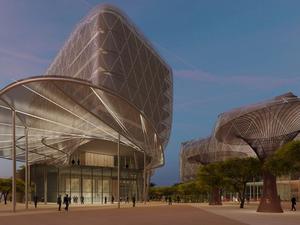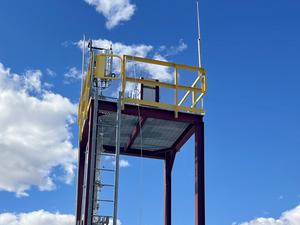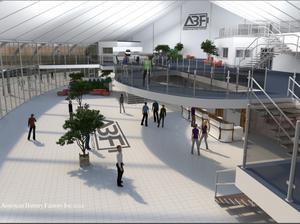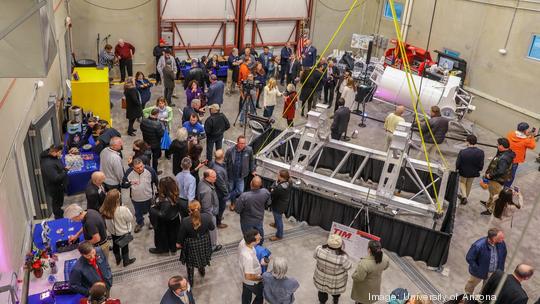
A new University of Arizona research building devoted to conducting cutting-edge missions at the “edge of space” opened this week and makes the school one of just a few institutions able to lead such operations.
The site, called the Mission Integration Lab, will launch missions using balloon observatories that take telescopes and other instruments into stratospheric altitudes that can avoid signal interference within the earth’s atmosphere. Such balloon-borne missions are cost-effective alternatives to full space missions, are quicker to schedule and can put new technologies to the test, the university said in its announcement.
The hangar-like building at the UArizona’s Tech Park at the Bridges in southern Tucson, opened Dec. 12. The university used funding from the New Economy Initiative — an Arizona Board of Regents program to prepare the state for future economic opportunities. The facility is expected to help UArizona reach its goal of hitting $1 billion in research activity.
“Not only will this new facility enable the UA to remain at the forefront of Research I institutions for astronomy, but it will enable us to run the kind of space-based research and mission operations that are significant when working with NASA, as well as key industry players like SpaceX, Boeing, Lockheed Martin, and others, said Elizabeth “Betsy” Cantwell, UArizona’s senior vice president of research and innovation, in a statement.
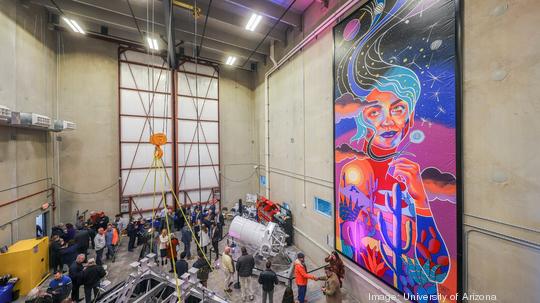
Projects at the site will include the use of the NASA-funded terahertz intensity mapper, which will be part of a balloon mission and use imaging equipment that can detect faint galaxies to create a giant map that includes five billion years of cosmic history.
Another NASA-funded mission — the Galactic/Extragalactic ULDB Spectroscopic Terahertz Observatory, or GUSTO — will carry an infrared telescope to study the life cycle of stars.
Once launched, the balloon missions will take place in the transition zone between the earth’s atmosphere and space that is sometimes called “the edge of space.”
Back on the planet's surface, researchers will prepare the missions and test payloads and hardware protocols at the UArizona site.
The building has space enough to accommodate growing research programs and partnerships, UArizona said. The lab space was built by UArizona, Swaim Architects and Concord General Contracting, and was completed on schedule, Concord said.
Tech Parks Arizona is one of Arizona’s largest economic development organizations and has a mission to grow new businesses and launch companies in alignment with UArizona research goals. The organization directs the UA Tech Park and the UA Tech Park at The Bridges and the UArizona Center for Innovation incubator.
Tech Parks Arizona Associate Vice President Carol Stewart told AZ Inno that the new lab is the first research-specific building at the UA Tech Park at The Bridges.
